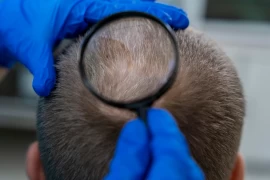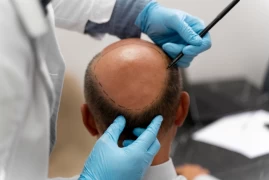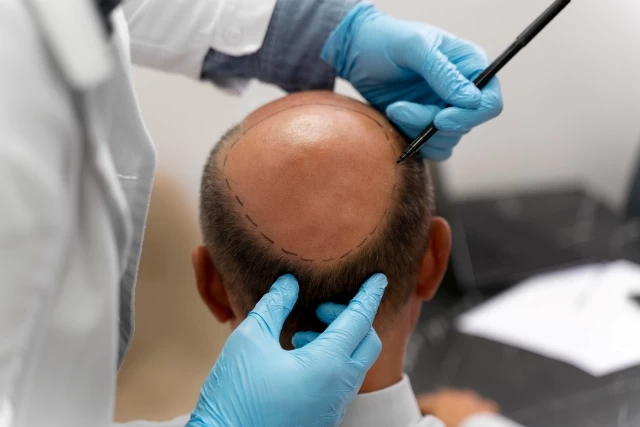
Hair Transplantation with FUE Technique
- Hair Transplantation with FUE Technique
- Advantages of Hair Transplantation with FUE Technique
- Does Hair Transplantation with FUE Technique Cause Pain?
- How Long is the Resting Period After Hair Transplantation?
- Will There Be Visible Scars on the Nape After Hair Transplantation?
- Does Hair Transplantation with FUE Method Provide Perfect Results in One Session?
Follicular Unit Extraction (FUE) is a modern hair transplant technique. It is more advanced compared to traditional methods and aims to achieve more natural results. The FUE technique involves the extraction and transplantation of individual hair follicles.
The FUE technique is typically performed under local anesthesia. Hair follicles are extracted one by one from the donor area on the scalp (usually the sides and back of the head). This process is carried out using microsurgical tools and special needles. The extracted hair follicles are then transplanted into areas where hair is thinning or absent.
Advantages of Hair Transplantation with FUE Technique
The FUE technique offers several advantages over other hair transplant methods, including:
- Less invasive: FUE is less invasive compared to traditional methods since individual hair follicles are extracted, eliminating the need for a large incision or stitches. This speeds up the healing process and results in fewer visible scars.
- Natural appearance: The extraction of hair follicles individually allows for a more natural appearance. The transplanted hair follows the original growth angle and pattern, resulting in more realistic outcomes.
- Less discomfort: FUE causes less discomfort for the patient. Minimal pain or discomfort is experienced during the procedure, and the recovery period is usually faster.
- Healing process: FUE offers a quicker healing process. Small scabs may form in the area where hair follicles were extracted, but these typically disappear within a few days. Once the healing process is complete, the transplanted hair begins to grow naturally.
While FUE is an effective hair transplant method for suitable candidates, it may not be suitable for everyone, and results may vary in each case. Therefore, it's important to consult with a hair transplant specialist to determine the most suitable method for you.
Does Hair Transplantation with FUE Technique Cause Pain?
During hair transplantation with the FUE technique, minimal discomfort may be felt, but pain is typically minimal or mild. Local anesthesia is used to minimize pain during the procedure.
Local anesthesia numbs the scalp, preventing the sensation of pain during the hair transplant procedure. Anesthesia injections may be associated with a slight stinging sensation, but it is usually tolerable. Once the scalp is numb after anesthesia injections, any pain during the procedure is minimal.
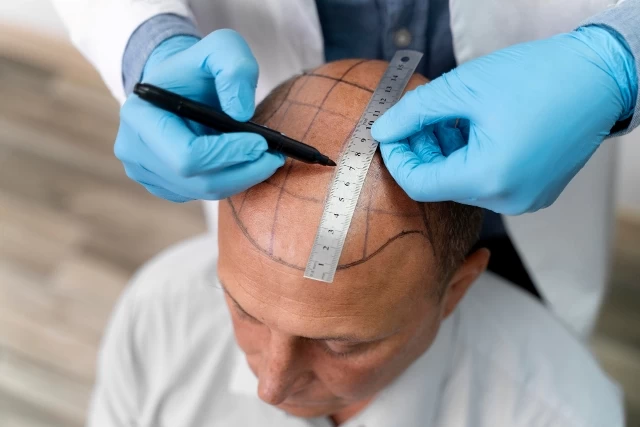
How Long is the Resting Period After Hair Transplantation?
After hair transplantation with the FUE method, several days of rest are usually recommended. However, the full recovery period and resting time may vary from person to person and depend on various factors. Here's a general guide on the resting period after FUE hair transplantation:
- First few days: Resting is important during the first few days after hair transplantation. It's common to experience scabbing, redness, or mild swelling in the transplanted area during the post-procedure period. Resting allows for the scabs to fall off and the skin to begin healing.
- Return to work: The time to return to work varies depending on the type of job and its physical demands. Many people can return to work after resting for a few days following hair transplantation. However, in some cases, a longer resting period may be necessary, especially for physically demanding or stressful jobs. Consult with your specialist to determine the most suitable time to return to work.
- Exercise and sports activities: It's important to avoid heavy exercise or sports activities for a while after hair transplantation. These activities can increase blood circulation in the transplanted area and affect the healing process. You can determine when to start exercising again based on your specialist's recommendations.
- Healing process: The complete healing process after hair transplantation can take several weeks to months. During the initial weeks, the transplanted hair follicles settle in, and some shedding may occur. New hair growth usually begins within the first three to six months and can continue for up to a year. Detailed information about the healing process can be obtained from your specialist.
The resting period after hair transplantation may vary depending on the complexity of the procedure, your personal healing speed, and the area affected by the procedure.
Will There Be Visible Scars on the Nape After Hair Transplantation?
Minimal scars may form on the nape after hair transplantation with the FUE method. However, these scars typically become almost invisible and can be covered by surrounding hair. The formation of scars depends on the skill of the specialist, the techniques used, and your personal healing process. Your specialist can provide more specific information about how the scars will appear after the procedure.
Does Hair Transplantation with FUE Method Provide Perfect Results in One Session?
Hair transplantation with the FUE method typically provides excellent results in a single session. However, this depends on several factors and can vary depending on the individual.
To achieve perfect results, it's important to consider some factors:
- Quality and density of the donor area: The quality and density of the donor area used for hair transplantation are crucial factors affecting the outcome of the operation. Having an adequate supply of healthy hair follicles enhances the success of the operation.
- Experience and skill of the hair transplant specialist: The experience and skill of the specialist greatly influence the outcome of the hair transplantation operation. An experienced specialist increases the chances of achieving natural and aesthetic results by working with the correct angle and depth.
- Hair transplantation planning: Planning before the hair transplantation operation is essential. Factors such as designing the hairline, determining the areas for hair follicle placement, and distributing hair density evenly should be considered. Good planning helps achieve perfect results.
- Healing process: The healing process following the hair transplantation operation is crucial. It may take time for the hair follicles to settle and new hair growth to begin. Following the healing process and the specialist's instructions correctly are essential factors affecting the outcome of the operation.
It's important to note that achieving the desired results after hair transplantation may take some time. New hair growth and reaching the desired density can be a gradual process. Patience and proper care are essential.
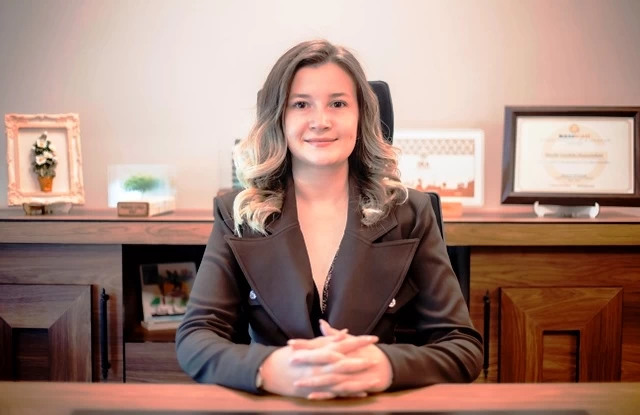
Ayşegül Bolat
Hair Transplant Coordinator


